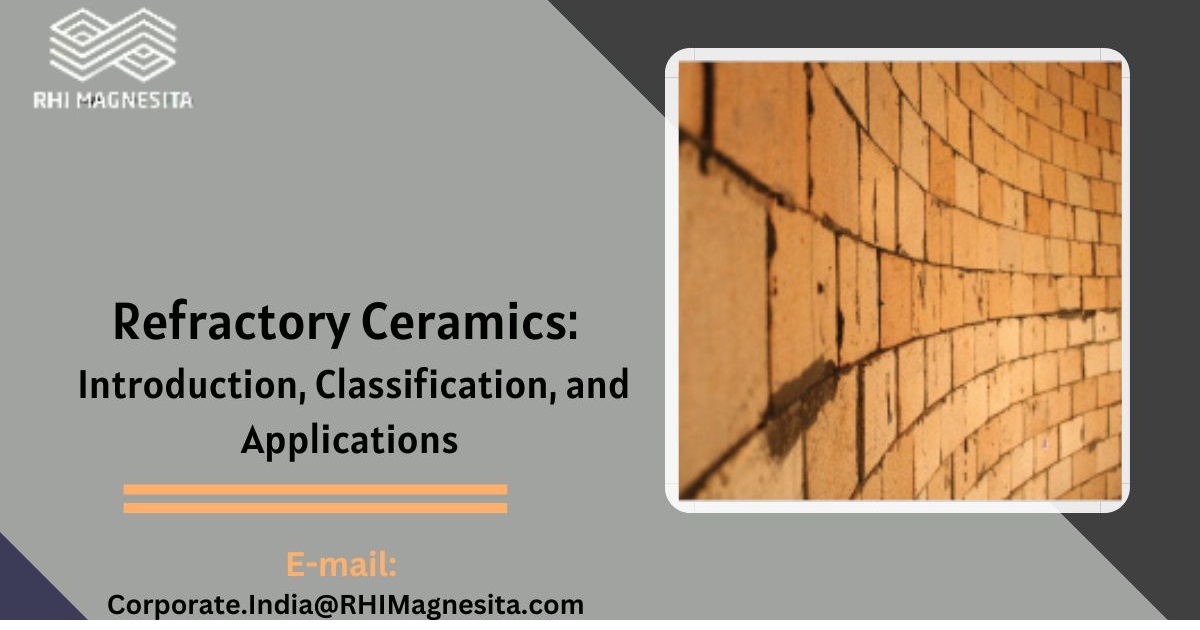
Emerging as the champions of high-heat applications across several sectors, refractory ceramics are remarkable materials that challenge the boundaries of temperature and time. Often surpassing 1,600°C, these ceramics are designed to resist wear in the toughest circumstances and preserve structural integrity under very hot settings. They form the backbone of contemporary industrial techniques as they provide necessary heat insulation and protection to important machinery.
Refractory ceramics are essential in sectors like metallurgy, glass, and cement as they help furnaces, kilns, and reactors to run effectively.
They improve energy efficiency, therefore lowering operational costs, and protecting against thermal stress and corrosion. Their adaptability also reaches the aerospace and automobile industries, where they are used in exhaust systems and thermal protection mechanisms to ensure performance and safety under very demanding environments.
Refractory ceramicsclay refractories are made from natu become even more important as we enter a period of higher industrial needs and technical developments. Their capacity to resist the unrelenting forces of nature defines them as indispensable partners in fostering innovation, sustainability, and efficiency across many uses, hence securing their reputation as the hidden heroes of contemporary industry.
Classification of Refractory Ceramics Based on Composition
Refractory ceramic categorization reveals an interesting range of materials mostly characterized by their composition. Usually prized for their flexibility and simplicity of shape, clay refractories are made from naturally occurring clay minerals. Widely used in furnaces and kilns, these flexible materials reflect a harmony of durability and flexibility and shine in heat resistance.
Non-clay refractories are made of a wide range of materials, including oxides, carbides, and nitrides, intended for particular uses. High-alumina refractories—which have amazing strength and thermal stability—are perfect for high-temperature settings. Understanding these categories helps businesses choose the best refractory ceramics, thus ensuring maximum performance and lifetime in challenging applications and so improving their operational efficiency.
Applications of Refractory Ceramics Based on Structure
Two basic types of refractory ceramics based on structure include dense refractories and insulating refractories, each suited to satisfy certain performance requirements in high-temperature situations.
The compact microstructure of density refractories reflects extraordinary mechanical strength and thermal stability. These materials are indispensable in sectors such as metallurgy and cement as they are very resistant to thermal stress and wear and can survive very high temperatures. From blast furnaces to kilns, where durability is crucial, their capacity to maintain integrity under demanding circumstances ensures dependability in important applications.
On the other hand, insulating refractories give thermal insulation priority over density and a porous construction that reduces heat transmission. In high-heat applications, these lightweight materials help to lower energy loss, thereby improving general efficiency. Applications where temperature control is crucial, like furnaces and kilns, where insulating refractories are especially useful in helping different industries to achieve maximum performance while saving energy, enable them to use their resources most effectively. Understanding these structural categories helps manufacturers choose suitable refractory ceramics so that every application benefits from the special qualities of both dense and insulating materials.
Refractory ceramics classification and applications based on performance
Refractory ceramics classified according to performance cover a wide range of materials catered to satisfy the demanding requirements of high-temperature applications. The low alumina concentration of low-alumina refractories is usually less than 48%. These materials are very resistant to thermal stress and fit for surroundings with changing temperatures. Particularly for applications requiring non-ferrous metals, their cost and adaptability make them a popular option in many different fields.
On the other hand, high-alumina refractories have a greater alumina concentration (more than 48%), which at high temperatures increases strength and stability.
The steel and cement sectors would find these refractories perfect as their capacity to resist great mechanical and thermal stress ensures lifetime and durability. Since silica makes up most of silica refractories they are very resistant to high temperatures and thermal stress. Their great performance in acidic settings makes them indispensable in glass production and other applications needing corrosion resistance.
Rich in magnesium oxide, magnesite refractories show amazing resistance to basic slags and high temperatures. Often used in steelmaking and cement kilns, their capacity to survive caustic conditions is vital. Understanding these performance-based categories helps businesses choose suitable refractory ceramics, therefore ensuring the best performance and dependability in various uses.
Concluding Remarks
In many different sectors, where resistance to intense heat is absolutely essential, refractory ceramics are vital. They are indispensable in the metallurgical industry for lining furnaces, kilns, and forges, therefore ensuring constant high-temperature operations and protection of equipment from thermal damage. For structural stability, rotary kilns and other high-heat equipment in the cement industry depend on these ceramics, fostering energy efficiency and lifetime.
Refractory ceramics survive the high heat of glass-melting furnaces in the glass industry, ensuring uniformity and purity in manufacturing.
These materials also help in thermal protection systems and exhaust assemblies in the aerospace and automotive sectors, allowing cars and airplanes to withstand hostile environments. Refractory ceramics are unsung champions of durability, safety, and efficiency across sectors.